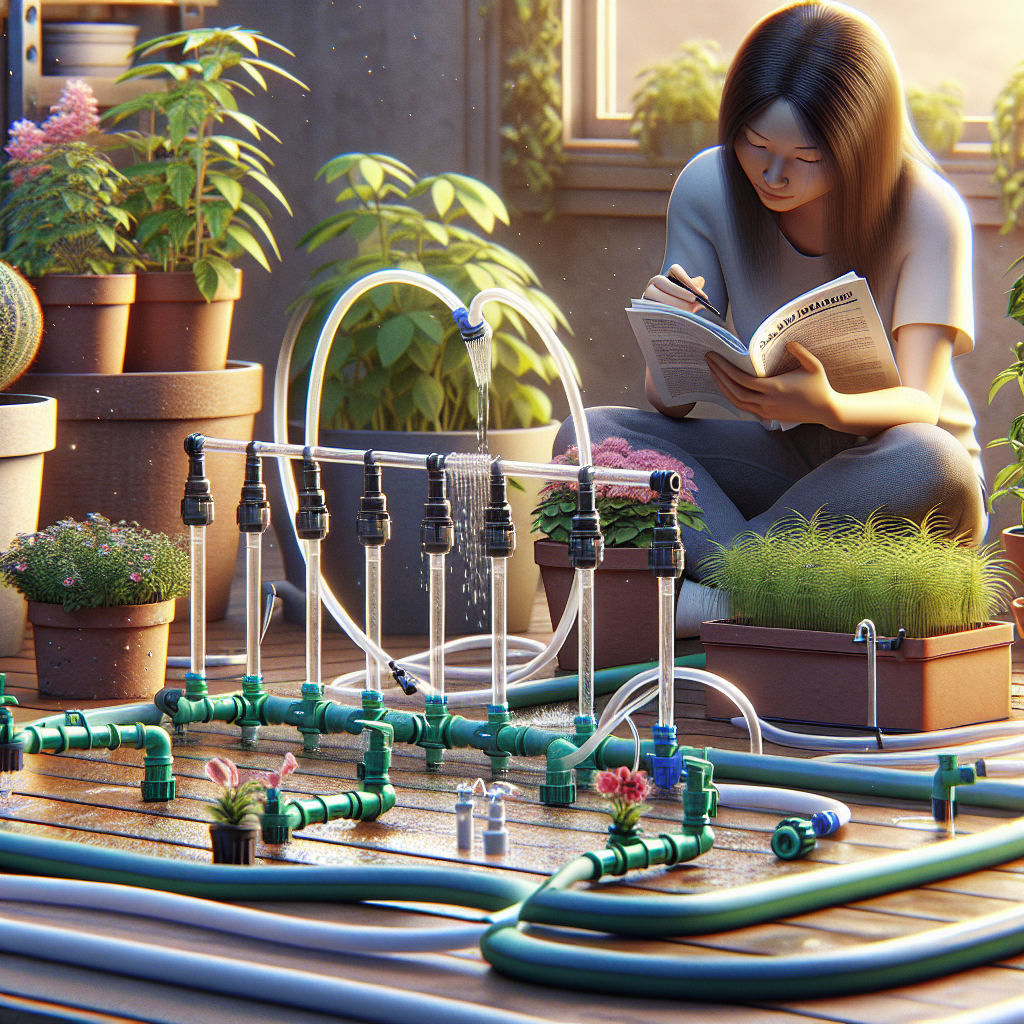Table of Contents
Container plants can bring beauty and life to any space, whether you have a small balcony, a cozy corner in your home, or a sprawling backyard. However, keeping container plants healthy and thriving can be a challenge, especially when it comes to watering. Watering container plants can be tricky – too much water can lead to root rot, while too little water can cause wilting and dehydration. This is where slow drip irrigation comes in.
Slow drip irrigation is a simple and effective way to ensure that your container plants receive the right amount of water they need to thrive. By providing a slow and steady drip of water directly to the roots of your plants, you can avoid overwatering and underwatering, leading to healthier and more vibrant plants. In this article, we will explore the basics of slow drip irrigation for beginners, simplifying the process of caring for your container plants and helping you achieve greener thumbs in no time.
Understanding Slow Drip Irrigation
Drip irrigation is a method of watering plants by slowly dripping water directly onto the soil at the base of the plant. This method allows for more efficient watering as it delivers water directly to the roots where it is needed most. Slow drip irrigation takes this concept one step further by delivering water at an even slower rate, mimicking the natural way that rainwater seeps into the soil. By providing a slow and consistent supply of water, slow drip irrigation helps prevent both overwatering and underwatering, ensuring that your plants are healthy and hydrated without risk of root rot or dehydration.
Benefits of Slow Drip Irrigation
There are several benefits to using slow drip irrigation for your container plants. One of the main advantages is that it helps conserve water by delivering it directly to the roots where it is needed most. This helps reduce evaporation and runoff compared to traditional watering methods like sprinklers or hand watering. Slow drip irrigation also promotes healthier root growth by encouraging roots to grow deeper into the soil in search of water. This leads to stronger and more resilient plants that are better equipped to withstand environmental stressors like drought or extreme temperatures.
Setting Up Slow Drip Irrigation
Setting up slow drip irrigation for your container plants is easier than you might think. All you need are some basic materials like a water reservoir, tubing, emitters, and stakes. Start by choosing a suitable water reservoir such as a plastic bottle or jug with a lid that has been pierced with holes for tubing placement. Connect tubing from the reservoir to each plant using emitters to regulate the flow rate of water. Secure the tubing in place with stakes or clips to ensure it stays in position. Adjust the flow rate as needed based on your plant’s watering requirements.
Tips for Successful Slow Drip Irrigation
To ensure successful slow drip irrigation for your container plants, there are some tips you should keep in mind. First, monitor your plants regularly to check if they are receiving enough water. Adjust the flow rate or frequency of watering as needed based on environmental conditions like temperature or humidity levels. It’s also important to use high-quality materials when setting up your slow drip system to prevent leaks or clogs from occurring. Lastly, consider using organic mulch around your plants to help retain moisture in the soil and reduce evaporation.
FAQs
1) How often should I water my container plants using slow drip irrigation?
– The frequency of watering will depend on factors like plant type, soil type, weather conditions, and pot size. It’s best to monitor your plants regularly and adjust watering accordingly.
2) Can I use slow drip irrigation for all types of container plants?
– Yes! Slow drip irrigation can be used for all types of container plants including flowers, herbs, vegetables, succulents, and more.
3) What are some common mistakes beginners make when setting up slow drip irrigation?
– Some common mistakes include using low-quality materials that may leak or clog easily; not adjusting flow rates based on plant needs; not monitoring plants regularly; not considering environmental factors like temperature or humidity levels.
4) Can I leave my slow drip system running while I’m away on vacation?
– Yes! Slow drip systems are great for keeping your container plants hydrated while you’re away on vacation. Just make sure you test run them beforehand ensure they’re working properly.
In conclusion,
Slow drip irrigations systems are an excellent way for beginners looking after their beloved containers garden flourishing without having much skills gardening experience at all!














